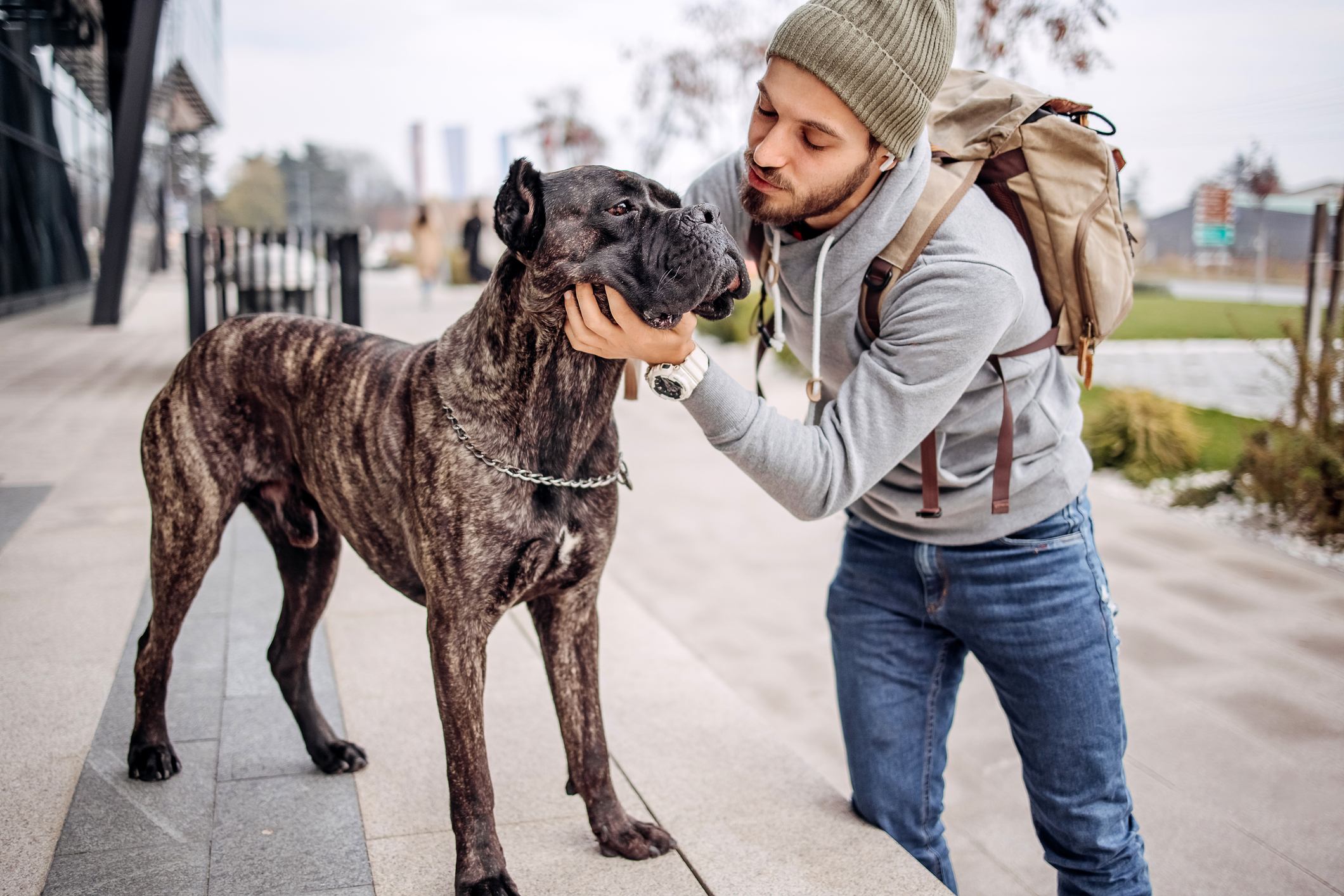Cane Corso: The Majestic Italian Mastiff
September 6, 2024 by Bobby Davidson

The Cane Corso, pronounced kaa-nay Corso, stands among the world’s largest dog breeds. Additionally, this impressive canine belongs to the Mastiff family. Known for their dominant traits, they serve as exceptional guardians and devoted companions.
Overview of the Breed
Originally bred as guard dogs, hunters, and war dogs, these dogs display remarkable strength and athleticism. Specifically, the name comes from the Italian word “Cane,” meaning dog, and “cohors,” meaning protector. This title effectively translates to “Protector Dog.”
During the World Wars, people saw a significant decline in their population; however, the breed has made a resurgence since then. In fact, enthusiasts first introduced them to the USA in 1988. Moreover, the AKC recognized the breed in the miscellaneous class in 2007, and they became part of the Working Group in 2010.
Personality Traits
Many people misunderstand these dogs as aggressive. In reality, they do not possess an inherently aggressive nature. Instead, they show fearlessness and vigilance, which makes them excellent protectors. Furthermore, they can act as gentle giants around their families. However, their strong presence may intimidate strangers. Therefore, with the right training, owners can help them become loving companions, especially for children.
Characteristics
This breed belongs to the working group of dogs. Breeders specifically designed them for intelligence, strength, and alertness. Consequently, they excel in protection, search and rescue, and sledding. Their large size and protective nature demand rigorous training. Thus, they suit experienced dog owners best.
Size and Appearance
Cane Corsos are powerful dogs, usually weighing between 80 to 120 pounds. They typically stand between 23 to 28 inches tall, depending on sex and lineage. Their short, coarse coats come in various colors, including gray, black, red, fawn, and brindle.
Grooming Needs
Fortunately, caring for this breed requires minimal grooming due to their short coat. Regular brushing effectively removes dirt and debris. Additionally, owners need to pay attention to nail care. Although their nails may wear down naturally, trimming them regularly helps prevent discomfort.
Keeping Them Active
These dogs require regular physical and mental exercise. Thus, daily walks and engaging activities remain essential for their well-being. Without sufficient stimulation, they may develop unwanted behaviors, such as digging or chewing on furniture.
Health Considerations
Like all breeds, they can experience specific health issues. Common conditions include Hip Dysplasia, which can lead to mobility problems. Furthermore, Gastric Dilation Volvulus is a serious condition that requires immediate veterinary attention. Additionally, large breeds may face Ectropion, which causes drooping of the lower eyelids.
Feeding Requirements
Due to their size and activity levels, strong nutritional needs arise. A balanced mix of high-quality dry dog food provides the essential nutrients they require. Consequently, this diet, combined with proper exercise, ensures dogs remain happy and healthy.
Conclusion
In summary, this breed is a remarkable one known for strength, loyalty, and intelligence. With proper training and care, they can make a wonderful addition to any family. Therefore, if you plan to welcome one of these dogs, prepare for the commitment of raising such a powerful breed.
